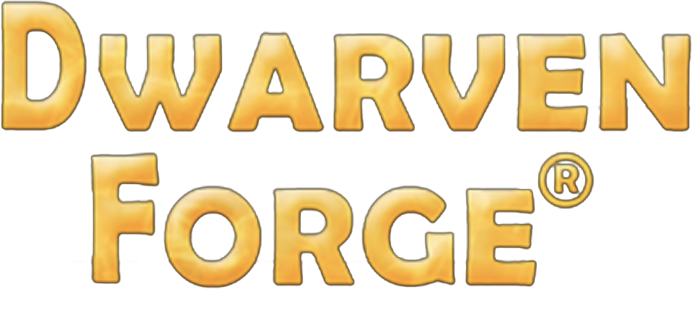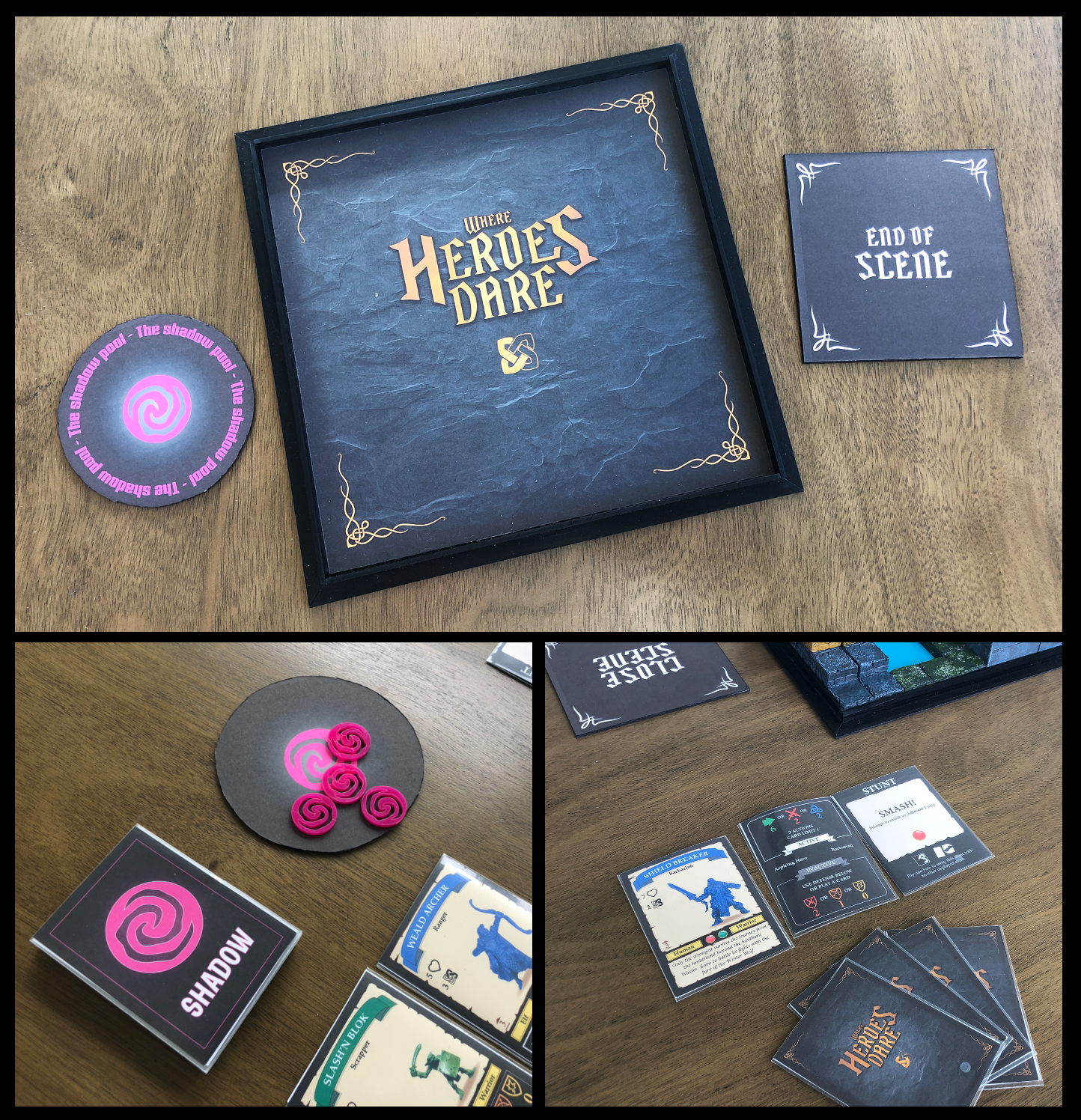When we first met as a team, we shared a lot of ideas. Concepts we had never quite had the means or time to act upon. Dwarven Forge is the most prolific, talented, and best-known name in 3D tabletop and dungeon terrain. They have been looking for new directions to explore, and an obvious path was to add a game system to take advantage of their terrain capabilities. For my part, this was an opportunity to design and deliver the ultimate theater of play experience. The more we talked, the more we leaned into this idea of the theater of play. We wanted to cut to the action and manage all the other narrative progression in a way that was clean and simple.
The first prototype laid the foundation for our future thinking. The adventures would be managed through a series of scenes. These would be played out on the stage, a frame that holds 25 Dwarven Forge tiles, each 2 x 2, creating a 10 x 10 play area. The modular Dwarven Forge tile system allows infinite flexibility to create new scene layouts. In addition, several new tiles have been developed to help further create height and thematic features. More on these later.
The early game also set two key ideas. Firstly, the heroes are battling shadow. There is a shadow pool that holds several shadow tokens. During play, more tokens may be added to this pool. Tokens may also get drawn from the pool to empower monsters. Within each scene, there is always tension as the players work to achieve the scene's goal while not letting shadow get out of control. Secondly, there is the end-of-scene tile. As the heroes defeat monsters, use terrain, perform stunts, and discover treasures, these all get placed on the end-of-scene tile. This is a fun record of everything the heroes achieved. Once the scene is over, points are scored for what is on this tile, and the heroes may use these to purchase new cards or influence the adventure.
Next week, I will provide a high-level overview of how the game plays.







